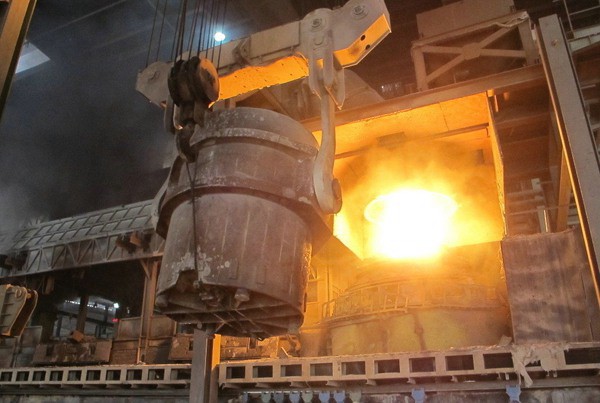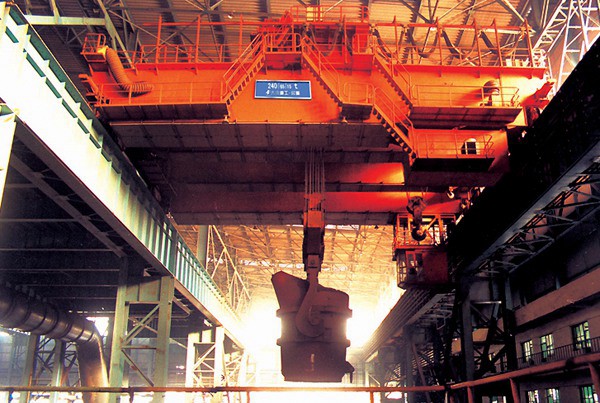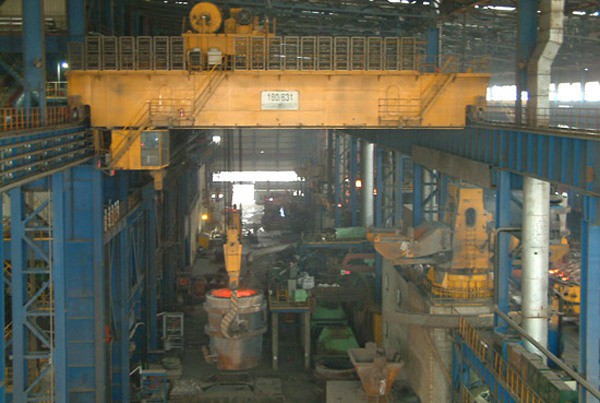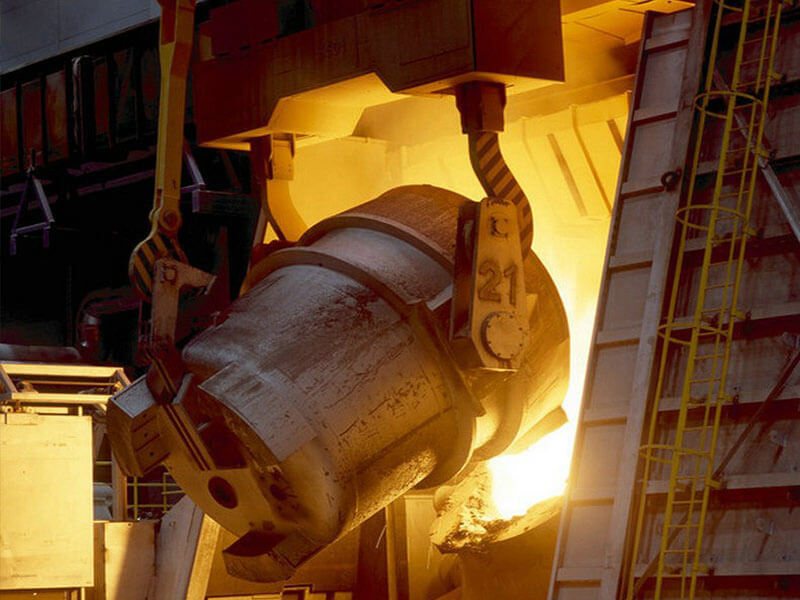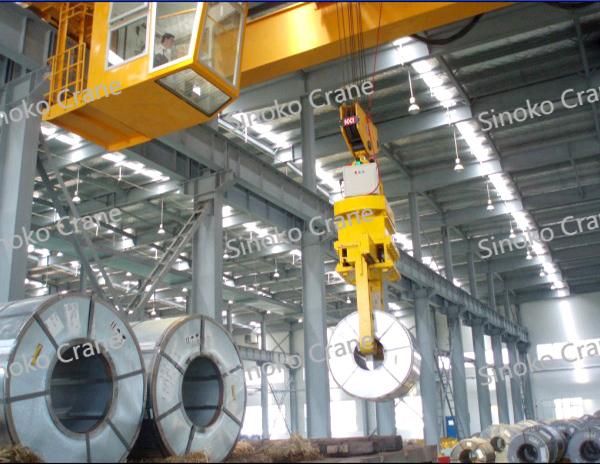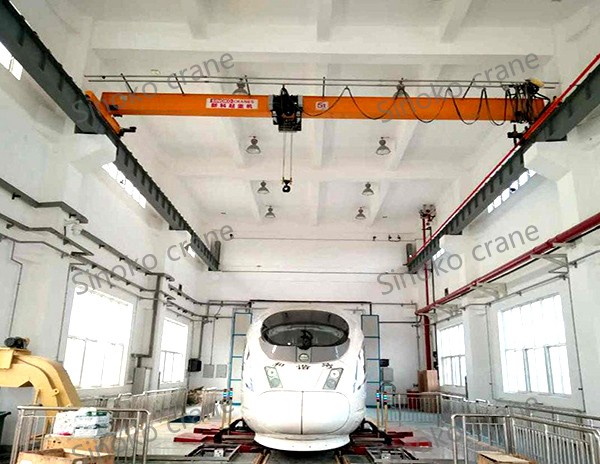Overview:
Steel mill overhead cranes is rely on moving along the workshop orbital direction, car lateral movement and hook lifting movement for work, suitable for metal smelting workshop, a special crane for lifting the molten metal and molten metal forging clasps. Generally metallurgical crane application to- 10 ℃ to + 50 ℃ environment temperature, under the temperature of 40 ℃ relative humidity is not more than 50%, board of radiation temperature does not exceed 300 ℃. Level of job class: A7, A8 is used in the relatively busy metallurgy foundry.
Sinokocranes can provide durable lifting equipment for every stage of steel mill production: scrap yard cranes, melting shop cranes, rolling and storage area cranes.
Sinoko steel mill overhead cranes project collection
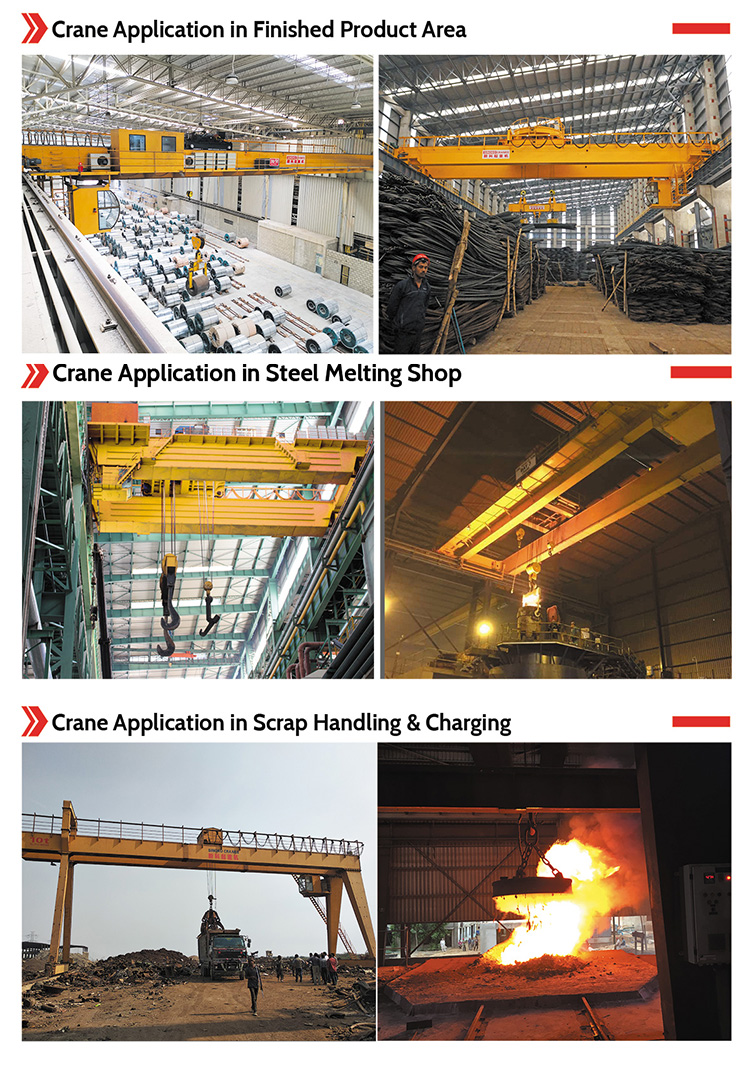
Steel plants are one of the industries that use overhead cranes and gantry cranes the most and have high requirements for reliability and failure-free rates. To this end, Sinoko is committed to providing customers with highly reliable and safe lifting equipment, perfectly adapted to the specific application and production environment of the steel mill. We can custom design and manufacture cranes for every stage of steel production.
Contact our crane professionals for custom steel mill lifting solutions.
Features
Overall structure:
1. Two crane gider with two rail or four girder with four rail (for 125t above)Technical Functions:
1. The mechanisms can be speed governing ( 1: 10 or larger);2. The lifting appliances are rotatable;
3. The spacing of portal hook is variable;
4. Limit and warning for over load;
5. Weighing and display of load, PLC control and failure detection, display, record and printing system;
6. Prevent collision between cranes of same span.
Specification
Lifting Height | t | 180/50 | 200/50 | 225/65 | 240/80 | |
Working Grade | A7 | |||||
Span | m | 28.5 | 28 | 27 | 22 | |
Lifting Height | Main Hook | 27 | 26 | 32 | 25 | |
Aux. Hook | m | 29 | 26 | 34 | 27 | |
Hoisting Speed | Main Hook | m/min | 7.6 | 6 | 11 | 7 |
Auxiliary | 10 | 10 | 11 | 9.6 | ||
Travelling Speed | Main Crab | 40 | 41 | 41 | 35 | |
Aux. Crab | 38 | 37.6 | 39.5 | 38 | ||
Crane | 80 | 73 | 84 | 80 | ||
Max Wheel Load | KN | 525 | 530 | 550 | 545 | |
Steel Track Recommend | QU120 | |||||
Power Source | 380V AC 3-Phase | |||||
CASE
Based on their intended use, overhead cranes can be classified into general-purpose cranes, steel mill cranes, and explosion-proof cranes. Each type is designed with specific working environments and load requirements in mind, ensuring safety and efficiency.
32T Steel Coil Handling Crane Project Case
Sinoko Crane with years of experience in crane manufacturing and design, the steel coil handling crane has helped customers reduce costs and improve the efficiency of steel coil transportation.
Learn More Get a QuoteInstallation of QZ-Type Grab Bucket Bridge Crane Project Case
The Sinoko QZ-Type Grab Bucket Bridge Crane was specially designed for a Brazilian client as a grab bucket crane, which significantly improved the client's work efficiency and received unanimous praise from the client.
Learn More Get a QuoteAutomotive Repair Facility in Russia 5 Ton Workshop Bridge Crane Project Case
The Sinoko crane, a 5-ton bridge crane tailor-made for a Russian customer's auto repair shop, has helped the customer solve the problem of lifting and transportation, improved the customer's work efficiency, and saved the customer's work costs.
Learn More Get a QuoteFAQs
A: Our triple-layer thermal protection: • Ceramic fiber insulation (1200°C rated) under girders • Water-cooled motor housings (ABB/SEW custom) • PFEIFER FireProtect® wire rope sleeves
A: ±50mm positioning accuracy via: • Laser-guided Siemens S7-1500 PLC control • Dual-hoist synchronization technology • Anti-sway algorithms at 7.6m/min speeds
A: Yes, with 550KN max wheel pressure: • Provides rail deflection calculations to EN 1993 standards • Foundation reinforcement kits for existing structures • Seismic-resistant design for zone 9 areas
A: 20,000+ hour service life through: • Hardened gear teeth (62 HRC SEW X-series reducers) • IoT-enabled predictive maintenance monitoring • Monthly performance analytics reports
A: ATEX-compliant safety systems: • Nitrogen-purged control cabinets (200Pa positive pressure) • Ceramic-coated wiring (UL94 V-0 certification) • Molten metal splash guards (ASTM E119 tested)
A: 4-stage collision avoidance: ① UWB positioning (±10cm accuracy) ② Thermal imaging obstacle detection ③ Automatic speed reduction to 20% at 2m proximity ④ Energy-absorbing buffer ends (EN 15011 certified)













